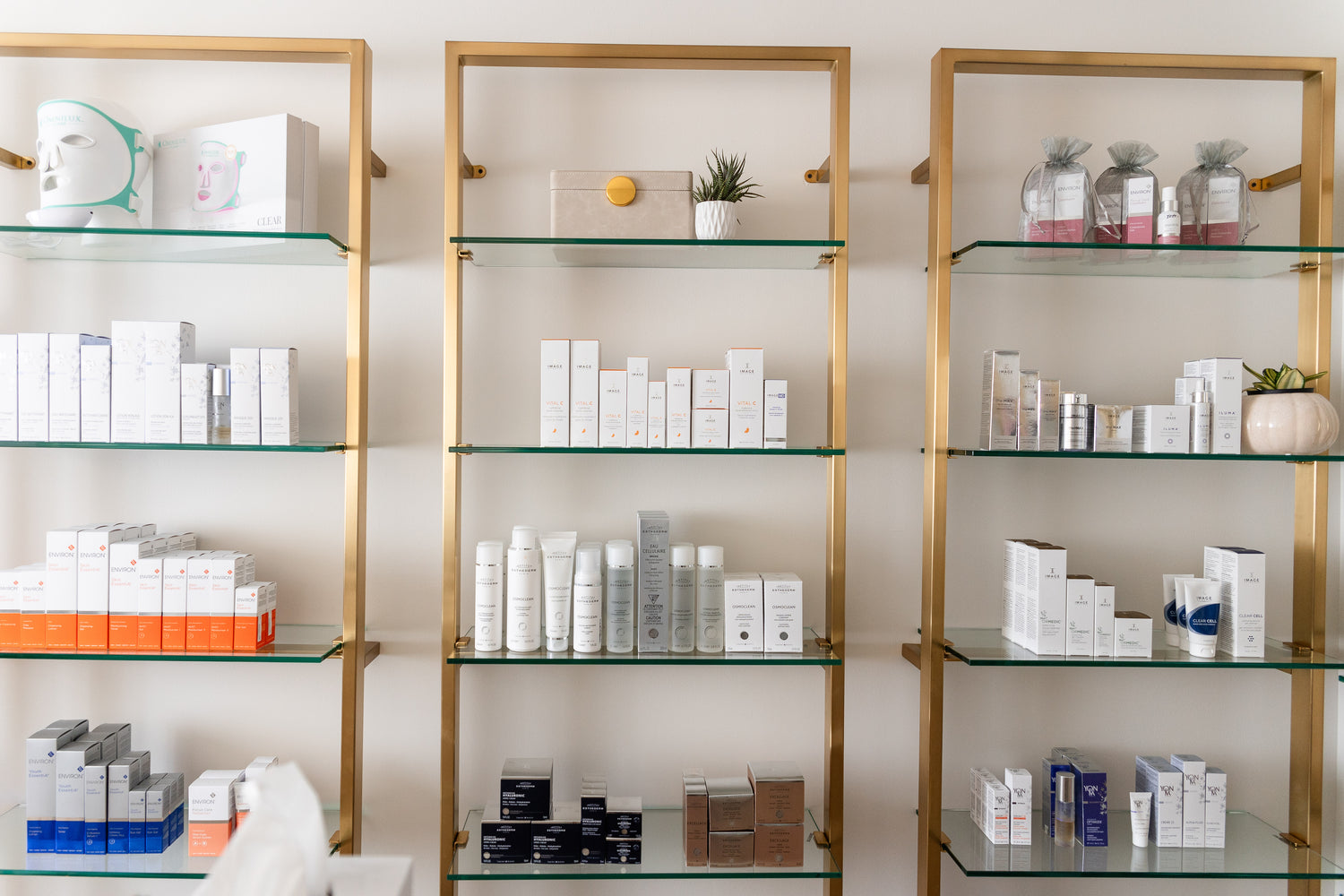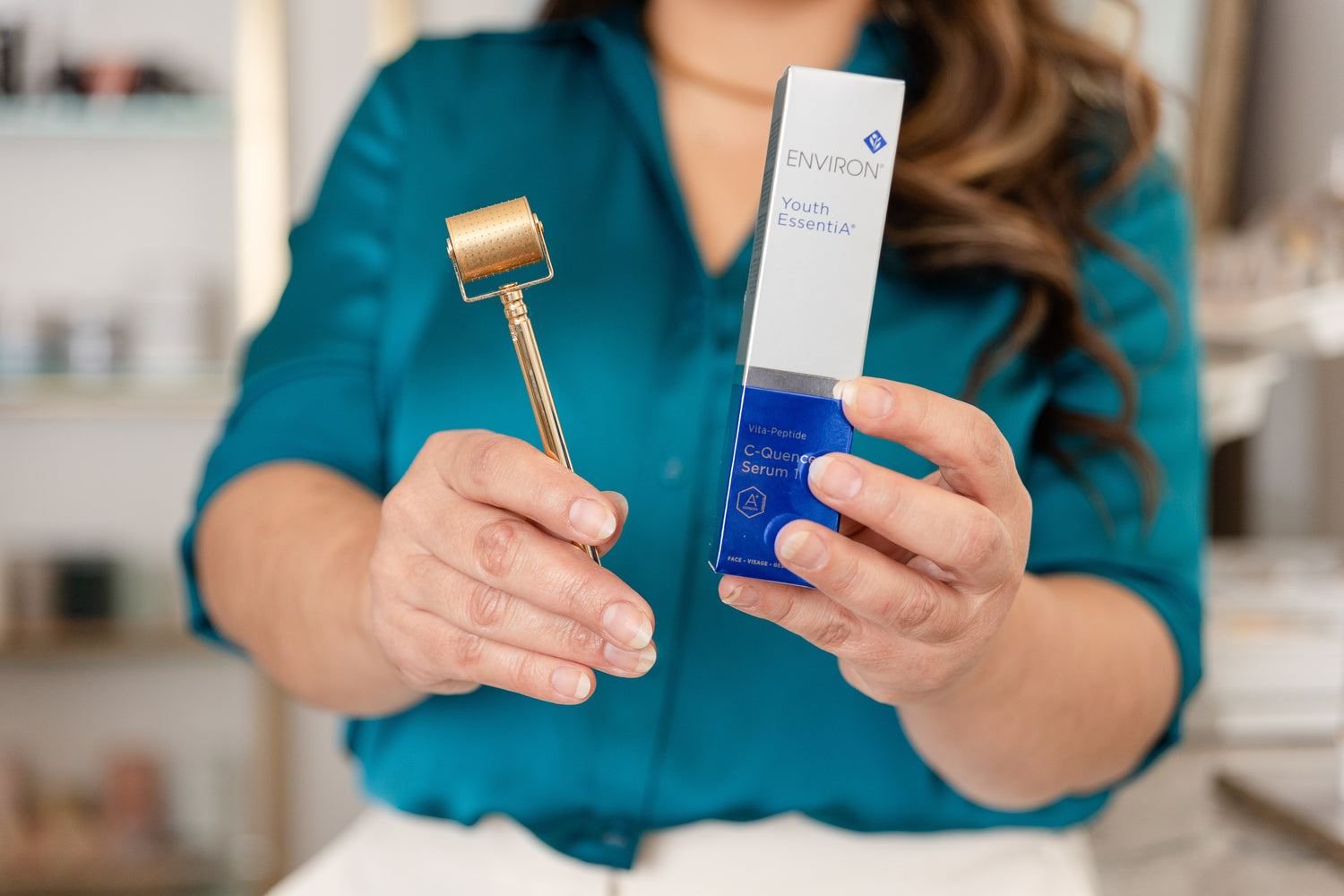The topic of skin discoloration is near and dear to my heart - it is the single largest complaint I have about my skin. I am of Asian decent so I have a predisposition for hyperpigmentation. To boot, the more aggressive treatment choices are not an option for me - the more aggressive tactics will actually trigger even more hyperpigmentation in my skin. I also love this topic because it feeds the nerdy scientist part of my brain - I love studying the cascading cause and effects and the intricate timeline for how pigmentation actually occurs in our skin.
While there have been so many advances in the cosmetic industry for treating pigmentation concerns, it is still one of the most difficult skin conditions to treat. Let's dive in and learn more.
What is Hyperpigmentation?
Pigmentation refers to the general discoloring of the skin. Hyperpigmentation refers specifically to discoloration that is dark. Hypopigmentation occurs when there is a loss of color in the skin. Our bodies produce pigment through a complex process called melanogenesis, where specialized cells called melanocytes produce melanin pigment. Melanin, in turn, is sent to various areas of our bodies. These deposits of pigment are eventually what we see on the surface of the skin as discoloration.
What Causes Hyperpigmentation?
In general, we see three categories of hyperpigmentation: UV-induced (sun damage), trauma-induced (post inflammatory) and hormonal (melasma). Sun damage is the most common form of hyperpigmentation and affects everyone. It occurs as a result of prolonged and repeated sun exposure and presents in the form of sun spots, age spots or lentigines.
Post inflammatory pigmentation occurs when there is an injury to the skin. For example, when I develop a pimple, that blemish will stay with me well after the acne has healed because my skin will hyper pigment at the site. So after the acne is gone, I'm treating the pigmentation in an effort to even out the skin tone.
Many women develop dark patches on their face and body during pregnancy, a condition known as melasma. This usually clears up after childbirth (and when hormone levels begin to stabilize). Some women can experience skin discoloration when starting birth control.
Why Does Melanogenesis Occur?
While we may not like the look of discoloration on our skin and are impatient for results during treatment, it's important to understand why our bodies react this way. When you have to leave the house for work or to run errands and it's raining outside, what do you? Most of us, grab an umbrella to keep us dry from the rain. Well, melanogenesis is the equivalent of using an umbrella. Triggering melanogenesis is our body's way of opening the umbrella in order to protect our dermis and underlying tissues from harmful UV radiation. The melanin that is produced is black, allowing it to absorb a majority of UV-B rays and blocking it from affecting lower areas.
While the results (skin discoloration) are undesirable, the process is critical in protecting our bodies.
How to Treat Hyperpigmentation?
First and foremost, the single most effective way to treat hyperpigmentation is via prevention. If you are not utilizing safe sun practices and using sun protection daily, then there is absolutely no point in treating skin discoloration. This is like working out with a personal trainer and then going to McDonalds afterwards - it is pointless.
"I wear SPF when I know I'm going to be outdoors for a long period of time" or "I hate wearing SPF because it feels sticky and clogs my pores" or "I'm inside all day, so I don't see the need for SPF". If I had a nickel for every time I've heard these sentiments, I'd be rich.
Sun protection product formulations have come a LONG way. There are so many options on the market, finding one that works for you is simply a matter of experimenting until you find one that you love. And then you should use it every day, no matter what your plans are for that day (inside or out). It is habit forming and non-negotiable.
I like to use a multi-prong approach to treating my hyperpigmentation -
The pigmentation has been deposited into the epidermis and is now visible on the surface of my skin. Safe and regular exfoliation is going to assist in removing dead skin cells and increasing cellular turnover, thereby, encouraging that pigmentation to move up and out. My skin type allows me to safely exfoliate 2-3 times a week, with a focus on the pigmented areas.
This single ingredient is viewed by so many beauty brands as a "hero ingredient" and I can understand why. It is a potent antioxidant that is capable of delivering instant and visible results on many fronts, but its ability to brighten and even out skin tone is why I love using it to treat hyperpigmentation. I use a vitamin C serum in the morning, under my sunscreen.
Also known as retinol, vitamin A is a powerhouse skincare ingredient for so many reasons. In the case of treating hyperpigmentation, it works to inhibit tyrosinase (an enzyme that plays a critical role in the production of melanin). I use a vitamin A enriched moisturizer at night.
Brightening Treatments
My quarterly professional facial treatments usually involve an intensive peel that is specifically formulated to treat pigmentation concerns. In between my professional treatments, I supplement with a monthly at-home session that incorporates multi-acid peel pads, botanical brightening extracts (serums) and a brightening mask.
Consistency is key when treating hyperpigmentation. While prevention is paramount, crafting a treatment plan that addresses pigmentation concerns across multiple platforms is how you'll begin to see steady progress.






